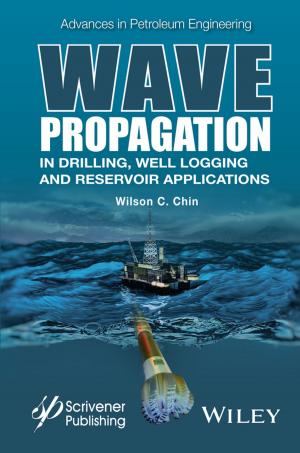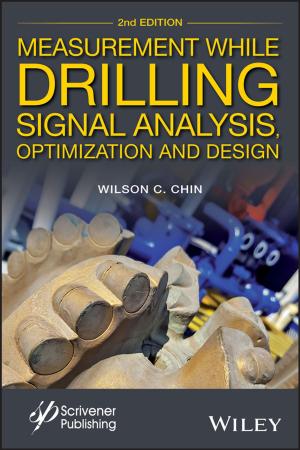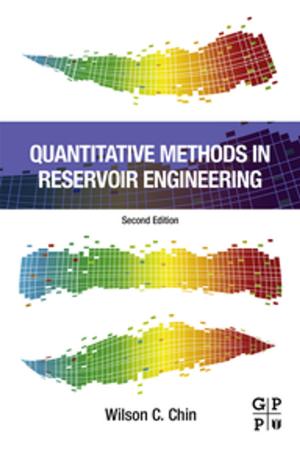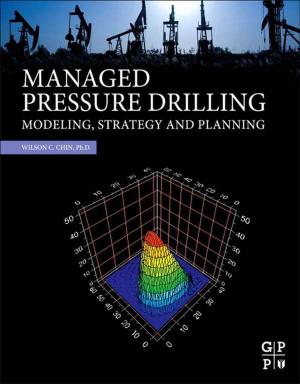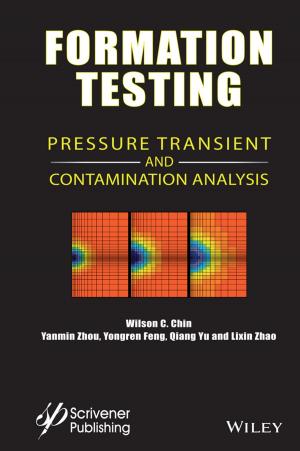Wilson C Chin: 13 books
Modern Borehole Analytics
Annular Flow, Hole Cleaning, and Pressure Control
Language: English
Release Date: October 18, 2017
Wilson C. Chin has written some of the most important and well-known books in the petroleum industry. These books, whose research was funded by the U.S. Department of Energy and several international petroleum corporations, have set very high standards. Many algorithms are used at leading oil service...
by Wilson C. Chin, PhD
Language: English
Release Date: July 18, 2002
Language: English
Release Date: July 18, 2002
For the practitioner, this volume is a valuable tool for predicting reservoir flow in the most efficient and profitable manner possible, using quantitative methods rather than anecdotal and outdated methods. For the student, this volume offers insight not covered in other textbooks.
Too many...
by Wilson C. Chin
Language: English
Release Date: September 19, 2014
Language: English
Release Date: September 19, 2014
Wave propagation is central to all areas of petroleum engineering, e.g., drilling vibrations, MWD mud pulse telemetry, swab-surge, geophysical ray tracing, ocean and current interactions, electromagnetic wave and sonic applications in the borehole, but rarely treated rigorously or described in truly...
Measurement While Drilling
Signal Analysis, Optimization and Design
Language: English
Release Date: July 23, 2018
Trade magazines and review articles describe MWD in casual terms, e.g., positive versus negative pulsers, continuous wave systems, drilling channel noise and attenuation, in very simple terms absent of technical rigor. However, few truly scientific discussions are available on existing methods, let...
by Wilson C. Chin, PhD
Language: English
Release Date: October 1, 2016
Language: English
Release Date: October 1, 2016
Quantitative Methods in Reservoir Engineering, Second Edition, brings together the critical aspects of the industry to create more accurate models and better financial forecasts for oil and gas assets. Updated to cover more practical applications related to intelligent infill drilling, optimized well...
Managed Pressure Drilling
Modeling, Strategy and Planning
Language: English
Release Date: January 25, 2012
Managed Pressure Drilling Operations is a significant technology worldwide and beginning to make an impact all over the world. Often reservoir and drilling engineers are faced with the decision on how best to construct a well to exploit zones of interest while seeking to avoid drilling problems that...
Resistivity Modeling
Propagation, Laterolog and Micro-Pad Analysis
Language: English
Release Date: December 22, 2016
Resistivity logging represents the cornerstone of modern petroleum exploration, providing a quantitative assessment of hydrocarbon bearing potential in newly discovered oilfields. Resistivity is measured using AC coil tools, as well as by focused DC laterolog and micro-pad devices, and later extrapolated,...
Formation Testing
Low Mobility Pressure Transient Analysis
Language: English
Release Date: November 20, 2015
Traditional well logging methods, such as resistivity, acoustic, nuclear and NMR, provide indirect information related to fluid and formation properties. The “formation tester,” offered in wireline and MWD/LWD operations, is different. It collects actual downhole fluid samples for surface analysis,...
Electromagnetic Well Logging
Models for MWD / LWD Interpretation and Tool Design
Language: English
Release Date: March 19, 2014
Almost all publications on borehole electromagnetics deal with idealizations that are not acceptable physically, and unfortunately, even these models are company proprietary. On the other hand, “exact models” are only available through detailed finite element or finite difference analysis, and...
Formation Testing
Pressure Transient and Contamination Analysis
Language: English
Release Date: February 14, 2014
Traditional well logging methods, such as resistivity, acoustic, nuclear and NMR, provide indirect information related to fluid and formation properties. The “formation tester,” offered in wireline and MWD/LWD operations, is different. It collects actual downhole fluid samples for surface analysis,...
Reservoir Engineering in Modern Oilfields
Vertical, Deviated, Horizontal and Multilateral Well Systems
Language: English
Release Date: August 11, 2016
Real-world reservoirs are layered, heterogeneous and anisotropic, exposed to water and gas drives, faults, barriers and fractures. They are produced by systems of vertical, deviated, horizontal and multilateral wells whose locations, sizes, shapes and topologies are dictated "on the fly, at random"by...
Formation Testing
Supercharge, Pressure Testing, and Contamination Models
Language: English
Release Date: March 14, 2019
This third volume in the "Formation Testing" series further develops new methods and processes that are being developed in the oil and gas industry. In the 1990s through 2000s, the author co-developed Halliburton’s commercially successful GeoTapTM real-time LWD/MWD method for formation testing,...
by Wilson C. Chin
Language: English
Release Date: March 21, 2019
Language: English
Release Date: March 21, 2019
Just when classic subject areas seem understood, the author, a Caltech, M.I.T. and Boeing trained aerodynamicist, raises profound questions over traditional formulations. Can shear flows be rigorously modeled using simpler “potential-like” methods versus Euler equation approaches? Why not solve...


